A few weeks ago, Sunology formed a partnership with Lancey to market a new solution: Sunology Lancey Capella. This product was unveiled with the aim of storing excess solar power from its photovoltaic stations. It's actually a high-end radiator equipped with a battery and a micro-inverter, capable of storing free (solar) or cheaper (off-peak) electricity and releasing it when electricity is most expensive. A truly interesting concept. Having been tested for over a month now, I invite you to discover the solution in more detail. Installing the Sunology Lancey Capella RadiatorThe Sunology Lancey Capella radiator arrives in a rather heavy box, which immediately sets the tone: “the first smart electric radiator with an integrated battery.” On the back of the box, you can see the radiator template, which will be very useful for its installation. The radiator is perfectly packaged, with foam corners and a film covering its glass surface.The Sunology Lancey Capella radiator comes with two wall mounts, installation instructions, and a small “Early” box that will be installed on the electricity meter. We'll come back to this in more detail later. This radiator is designed to replace an existing radiator. This is what I did at home when replacing this oil-filled radiator:Turn off the power and remove the old radiator.
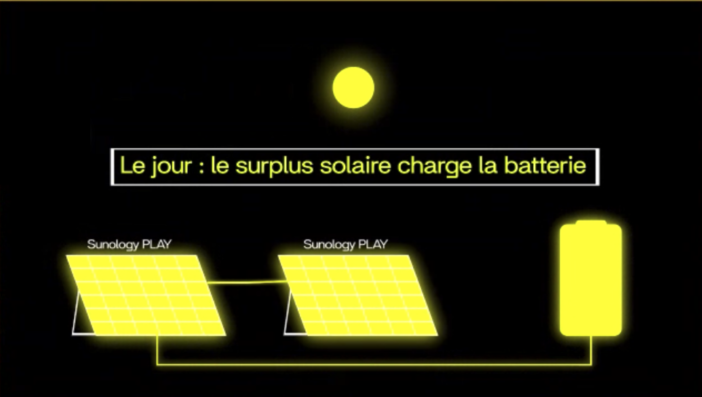
Then use the template on the box to position the radiator as desired and drill the mounting holes. For your information, this Lancey Capella radiator measures 800x603x107mm. These are relatively standard dimensions, but they will still require some space.
You will, of course, need to use the appropriate fixings depending on the type of wall. Here, in placo, I used Molly anchors, each capable of supporting 40kg.
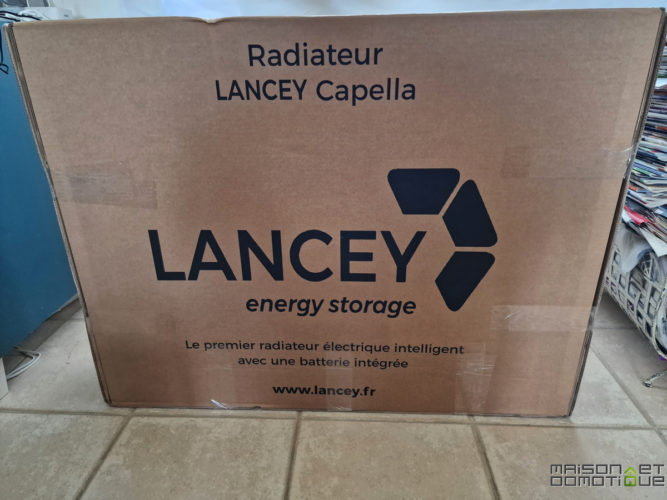
Attach the two support bars, leveling them:
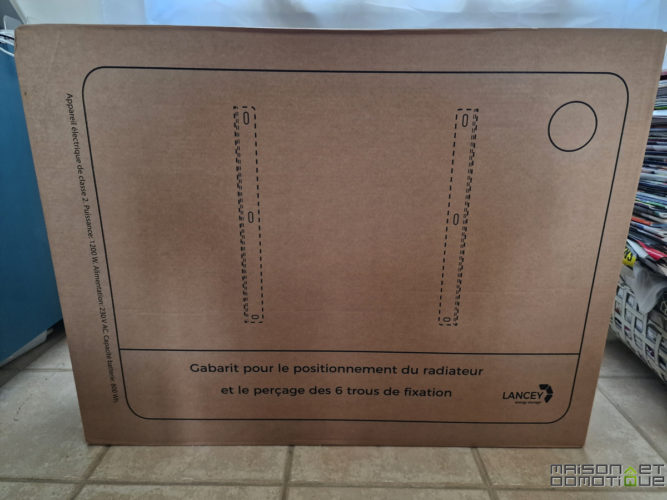
Connect the radiator's electrical supply: live, neutral, and pilot wire if available (although we won't be using it here).
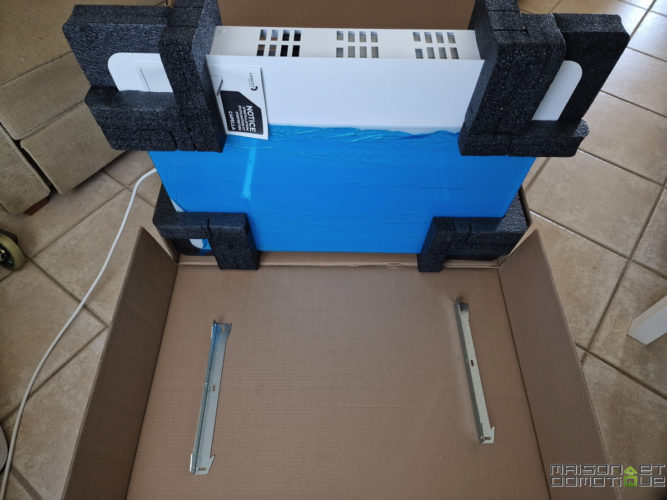
And place the Sunology Lancey Capella radiator on its brackets. Be careful, the radiator is quite heavy to handle on its own (28kg all the same!):
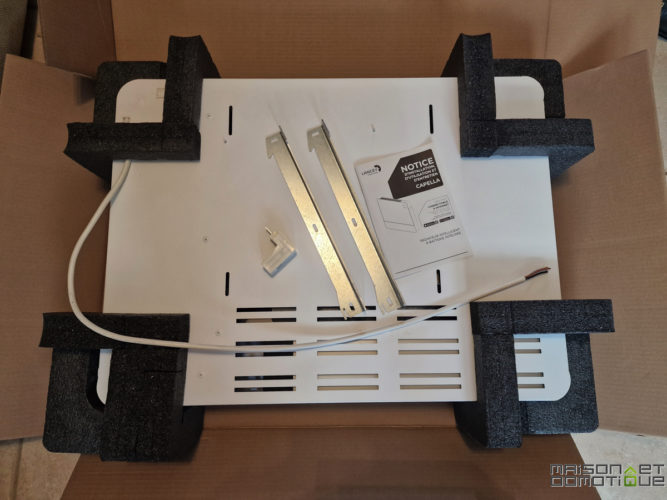
And here's our radiator in place, its protective film removed at the last minute to avoid any marks. It's quite attractive with its glass front!
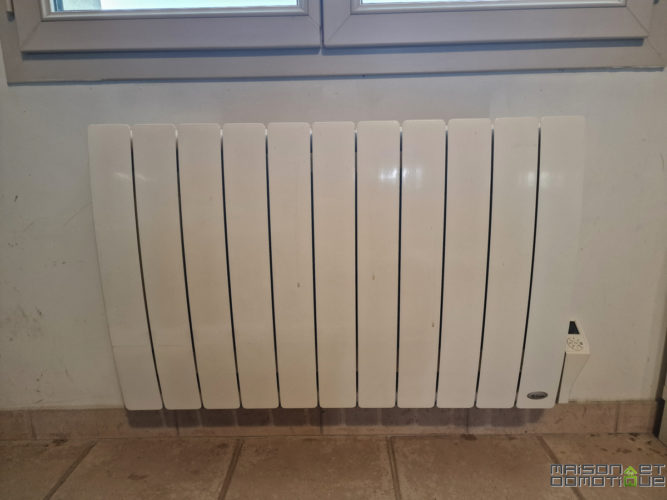
Attention : Avant de travailler sur l'alimentation électrique, assurez-vous que le compteur est éteint ! Nous travaillons ici sur du 230V, ce qui peut être fatal en cas de mauvaise manipulation. En cas de doute, faites appel à un professionnel.
At the top right, you can see its control keypad, which will allow you to operate it manually if necessary.
There's also an NFC zone for quick setup:

The top of the radiator, of course, has vents to vent heat, in addition to the radiant green front:
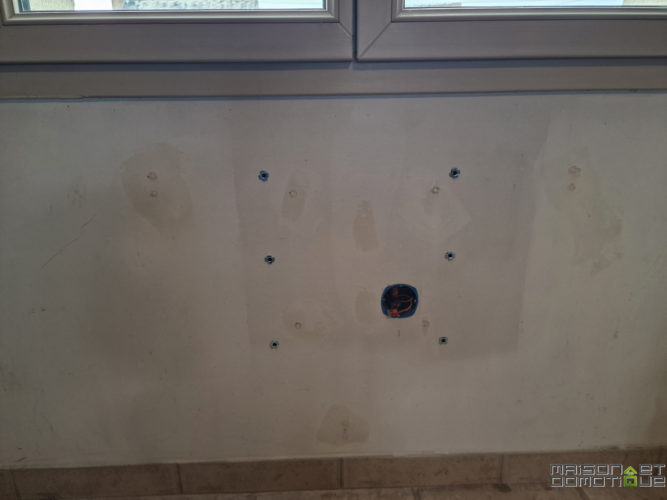
All that's left is to add the radiator to the myLancey app, available on Android and iOS. We install it and create an account:
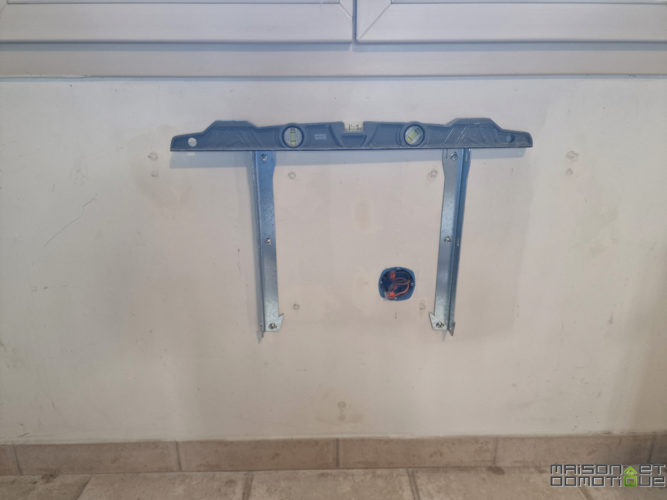

The app then displays some possible features:

We can then start adding our radiator:

We enter the name and password of the Wi-Fi network we want to join, then scan the QR code on the side of the radiator:

The product type is automatically recognized. We then need to wake up the radiator by pressing a button, then simultaneously press the “-” and “Lancey” buttons for 3 seconds. The radiator's keypad should then display a blue animation:

The radiator is added to the app!

We can then give it a name and locate it in a room, which is useful if we have several radiators.

From there, the radiator is operational and can be controlled from the app. But there is one last important element that will allow the radiator to optimize its operation: the small Early box to connect to the Linky meter. The app explains how to proceed for setup:

On the Linky meter, by removing the green cover (which should be freely removable), you can access the remote information terminals I1 and I2. These terminals allow you to read a lot of data from the electricity meter.

It's possible that wires are already present. Here, I have my energy manager connected to these terminals.
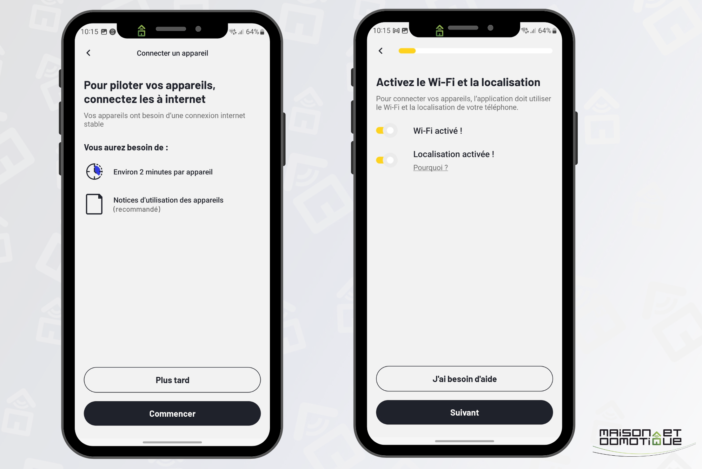
The Lancey box is designed to plug directly into these terminals. It will be both powered by them and capable of reading information from the meter. If wires are already present, they can be connected to the terminal block on this small box.

This box is well designed, as it integrates perfectly with the electricity meter, allowing you to easily replace the green cover.
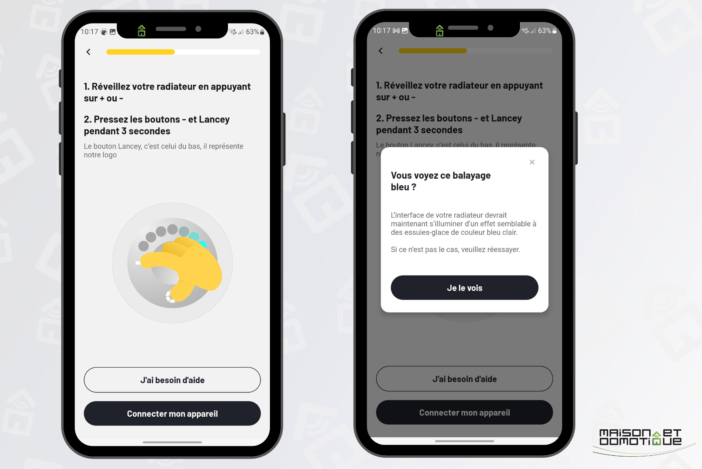
Back in the app, add this box to connect it to the Wi-Fi:
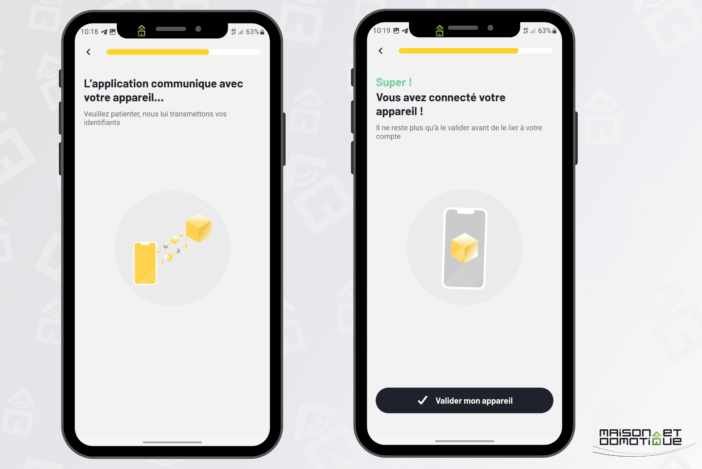
The installation is now complete. Not very difficult in itself, as long as you know how to connect an electrical outlet and drill six holes :) Here again, we have a virtually Plug&Play solution, Sunology always striving for simplicity.
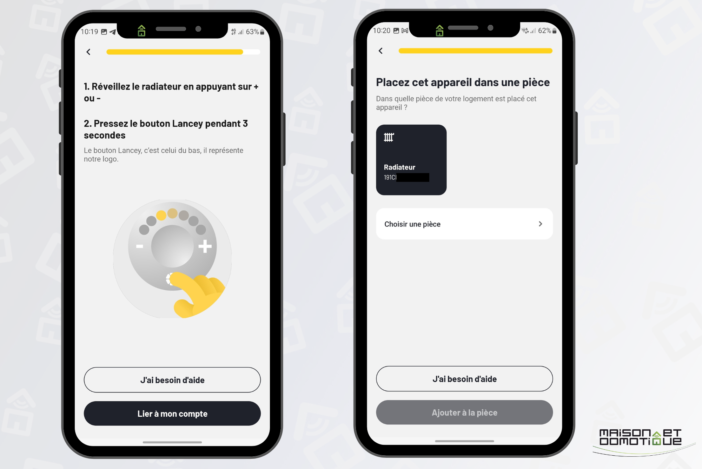
So let's move on to using this smart radiator…
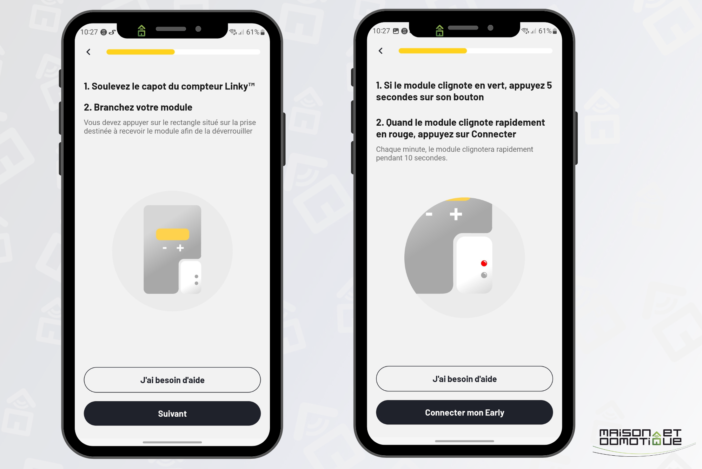
Using the Sunology Lancey Capella Radiator

After a few minutes, or even hours, the first information will be uploaded to the app, including data from the electricity meter for the subscription type, off-peak hours, and consumption monitoring.

The first page then displays the battery status, power consumption, indoor temperature, and the current program for the radiator.
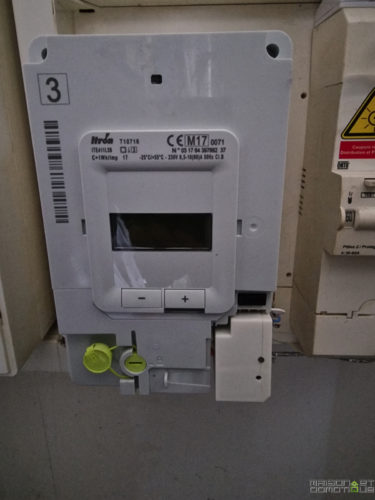
It is indeed possible to manually control the radiator to indicate a desired temperature, or select a schedule.
You can use a pre-programmed schedule, or create your own schedule based on your schedule, to indicate the times when you are present at home.
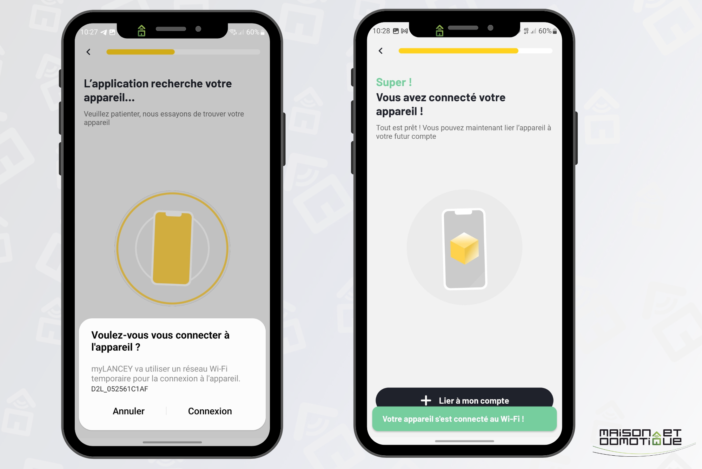
Lancey's predictive algorithms then optimize heating to ensure comfort while saving electricity.
To achieve this, the Sunology Lancey Capella radiator is equipped with numerous sensors: air quality (VOCs, CO2), occupancy detector, humidity level, brightness, and ambient temperature, allowing the system to continuously calculate the ideal temperature and heating power. All this while taking into account the weather (via the internet) and electricity prices.
Its self-learning system and its modulating heating power, in power steps (100W, 650W, 1200W), enable excellent performance and savings of up to 35% compared to a conventional electric convector of the same power.
This intelligent management system combines with a heating element with a tempered glass infrared radiant front, making it a very high-end radiator, awarded the 3-star “oeil” label. In use, the heat is indeed very pleasant: thanks to its technology, the radiator heats up quickly and stores heat in its heating element to release it for longer.
The programming and heating management are truly enjoyable. For optimal results, however, you should delegate all the intelligence to the Lancey system and not control the heating via the pilot wire, which is disabled by default. This detail may be a deal-breaker for owners of home automation systems, who are used to controlling their heating with Jeedom or any other third-party system, for example. Ideally, the goal is to equip all rooms with Lancey radiators, in order to centralize control within the same application and optimize your heating more generally. But in practice, given the high price of this radiator, it's understandable that not all rooms are equipped with one.
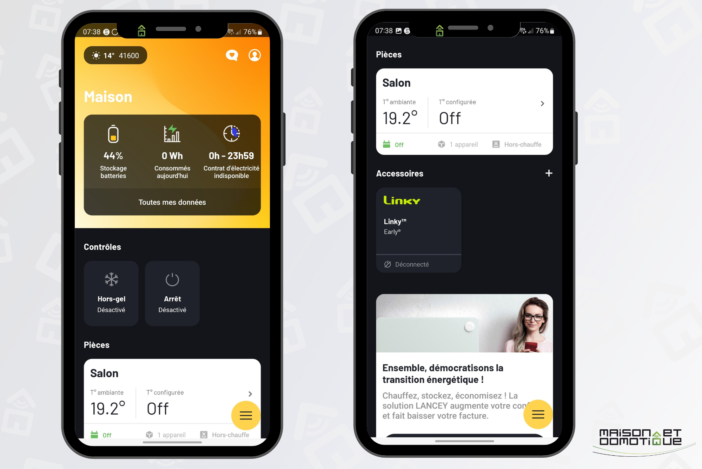
Rest assured, it's still possible to activate pilot wire control, very easily via a simple operation on the radiator's keypad (press the three buttons until the first indicator light turns yellow and flashes rapidly six times before displaying the set temperature). It can then be controlled via a third-party system, but this means missing out on the radiator's intelligence, which is a bit of a shame, since it's one of this device's strong points.
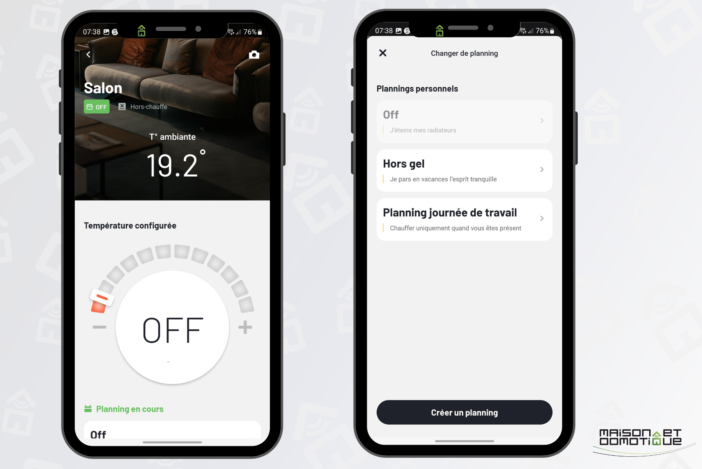
While the radiator function is truly powerful, the aspect that particularly interests us is the integrated battery, which automatically stores excess solar production, or electricity during off-peak hours, and releases it during peak hours. Please note: just because the radiator has a built-in battery doesn't mean it will be the only one using that battery. Far from it. Via a micro-inverter, the radiator can release the electricity stored in the battery to the entire house whenever it's needed. So, even in the summer, when the radiator is off, the battery continues to perform its electricity storage role to optimize the overall household bill.
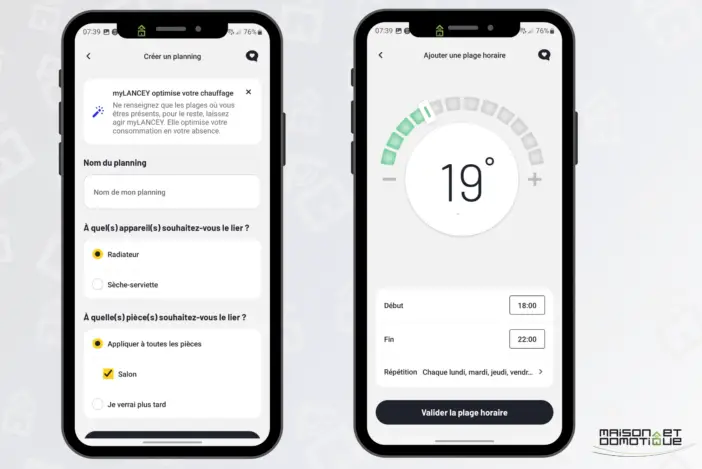
While the feature sounds promising on paper, I must unfortunately admit that I was left wanting more, for several reasons.
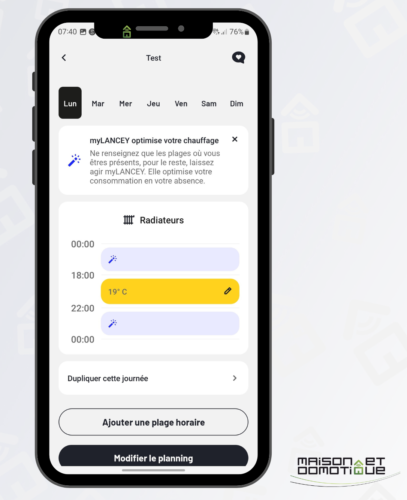
First of all, the app, which remains too succinct in terms of the information it provides. A tab allows you to track your energy balance, using data collected via the Linky. Here, for example, we see that I consumed 776 kWh, with a simple indication “over the last 36 months.” Even though the radiator has been plugged in for a month and a half. The information is therefore imprecise, as we don't know the exact period it covers, and we don't have any further details. In this case,
Beem went much further in its energy balance.
, with just the meter number to enter. Proof that it's possible to have something much more detailed. Here, only the radiator consumption will actually be useful to get an idea.
The second tab concerns battery storage. Here, we see that I've benefited from 4.59 kWh stored on the battery thanks to my excess solar production. We have a breakdown by day, week, and month:
The information is already much more interesting here. Unfortunately, it also highlights the system's low profitability: 4.59 kWh saved in a month and a half represents a maximum of €1 saved. So let's forget about calculating profitability, which wouldn't last a lifetime :/ This problem is due to two factors: First, my specific EDF subscription, “Zen Electrique”: I don't have off-peak hours at night, but I do have all day on Wednesdays and weekends. This is a subscription that fits my lifestyle much better, with the children being present on those days, we more easily have machines running, cooking to do, and various devices on (PC, consoles, TV, etc.). Unfortunately, it is a subscription that does not really fit with the logic of the Lancey radiator. My subscription is perfectly recognized, but the developers have chosen not to use off-peak days, because basically the battery would charge completely on Sunday, to discharge completely on Monday, then wait until Wednesday to recharge. In my case, I therefore give up on using off-peak hours. At the same time, if I take into account my off-peak / peak hours rate, with an 800w battery, the savings would be at most around €0.05 per day, or around twenty euros per year. So this is not the way that the biggest savings will be made the second point, and the most important: with our solar stations, we do not have an electricity producer contract, but a classic consumer contract. Consequence: the Linky meter is unable to display the quantity of electricity returned. We can have a solar surplus of 1000wh, the Linky simply displays a consumption of 0. Nothing more. The Lancey system is therefore incapable of knowing what overproduction we really have, and must be satisfied with a consumption of 0 to trigger the recharge or not of the battery, according to a very precise algorithm. Because if production is not stable, there is no point in triggering the battery recharge when the counter drops to 0, if it is to see it return to +200w 2 minutes later.
We also see it on the last tab of the “Photovoltaic” application, which unfortunately does not display anything here, since we do not have a Producer contract:
If the technology is very interesting and promising, it therefore seems really effective for people with an energy production contract. Which is not the case when we have a
Sunology type solar station
. This partnership is therefore ultimately of little interest to users of Sunology stations (or Beem and others for that matter). I admit that the disappointment is there, because Sunology's promise was really tempting. However, that doesn't matter much. A solar station user will not be able to have a producer contract, this has been verified with Enedis and EDF. The solution would therefore be to be able to monitor solar overproduction in real time via a means other than Linky data. The first that comes to mind would be via a metric amp clamp to place around the output phase of the electric meter. This is what I presented in particular with the moduleShelly E.M.
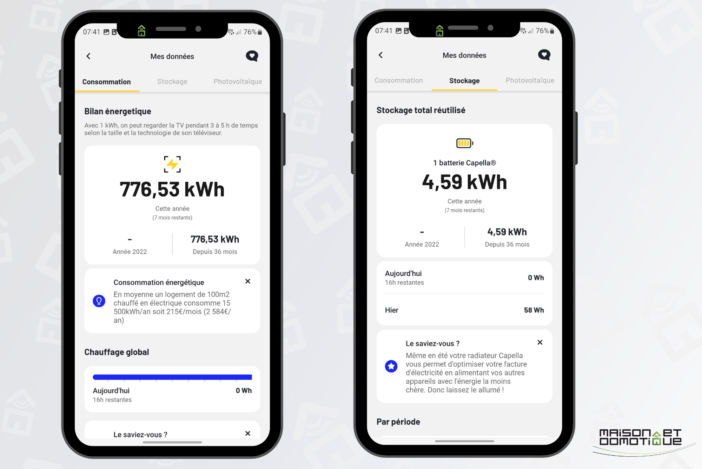
This allows me to precisely track my excess solar production, as seen here:
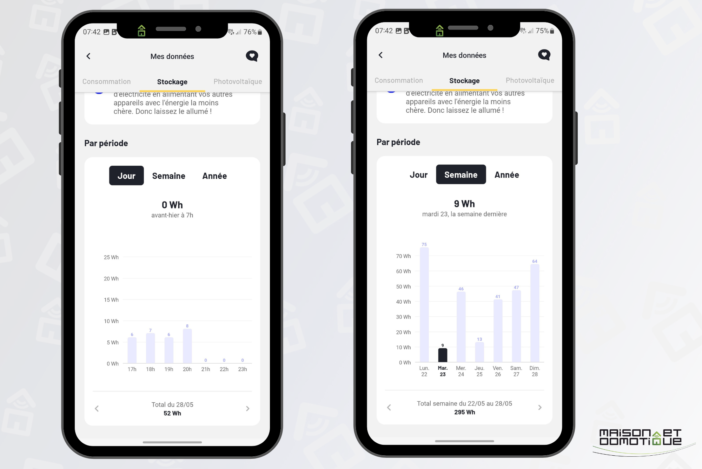
In green, we see that I had an excess production of 169 kWh in May. This is exceptional overproduction, as I have several solar stations currently being tested. This represents an average of 5.4 kWh of excess production per day. This excess production should more than cover the recharging of the 800 Wh Lancey battery. Despite this, it never charged more than 60% and only provided me with savings equivalent to a single day of excess solar production.
- For comparison, with the Shelly EM and Shelly smart plug combination I presented to you, I recharge a 2 kWh Bluetti battery every day, which I use to power the house at night. By using more precise data on excess production, the Lancey radiator should be able to properly harness this energy.
- Conclusion
As you can see, the results are rather mixed. Lancey offers a brilliant idea here for storing cheaper, or even free, energy and releasing it when it's more expensive, thus generating significant savings on the electricity bill. The battery is only 800Wh, admittedly, but that's due to weight and space constraints. It has the advantage of being hidden inside a radiator, and therefore doesn't take up any more space than the
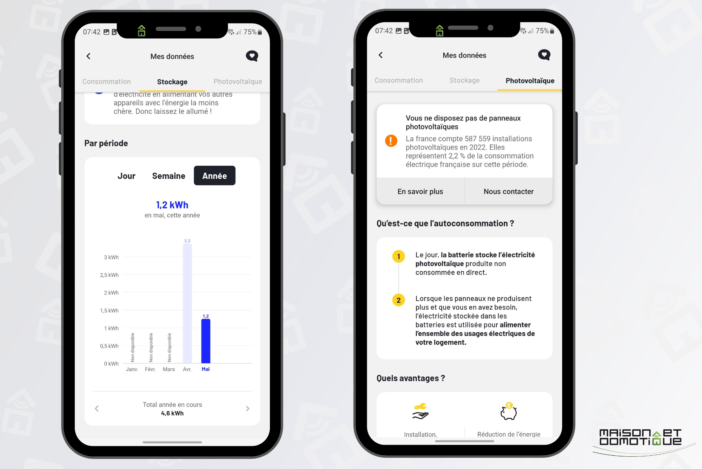
Bluetti AC200Max that sits at the foot of my electrical panel. We normally have several radiators in a home, at least 4 or 5. By combining all these devices, we could therefore achieve a storage capacity of over 4Kwh, which becomes attractive.The battery at the foot of the electrical panel isn't as attractive as the Lancey radiator…
Unfortunately, as we've seen, this storage is far from optimal when used with a solar station. It's even surprising that Sunology favored this solution given the results, or am I missing something? The solution is undoubtedly well-suited to homes with an electricity producer contract, but not to homes equipped with solar stations, with a simple electricity consumption contract. However, after inquiries from Enedis and EDF, a solar station user will not be able to request a switch to a Producer contract, as the constraints for this type of contract are not respected. While the heating aspect is excellent, the electricity storage aspect, on the other hand, proves disappointing when used with a solar station. At least with the system as it is currently designed.As a result, the number of potentially interested customers seems limited to me:
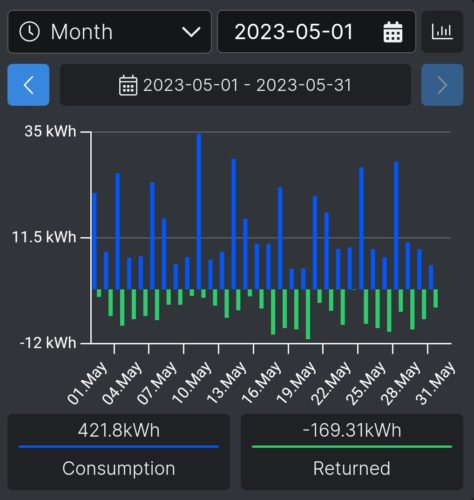
The solution will already only be of interest to people with electric heating. No more district heating, heat pumps, wood/pellet stoves, etc. Because equipping yourself with such a solution to exploit only the battery portion is not at all cost-effective.
Battery optimization will only be achieved for homes with an electricity producer contract. This means that solar stations are no longer used, as, as we've seen, they are clearly not being used properly. Finally, you'll still need to budget, as this radiator issold for €2,149 (€2,041 thanks to our exclusive code
SUN_MAISONDOMOTIQUE
).
For comparison, this rate covers the cost of my Bluetti 2000Wh and the Shelly modules needed for its automatic charging. And this system allows for savings of around fifteen euros per month, compared to the €1 I achieved with the Lancey. The system is certainly less plug and play, but plug and play solutions are coming to market to meet this demand, truly dedicated to storage, such as Ecoflow's PowerStream solution, which I'm currently testing in parallel, and which was officially announced yesterday.
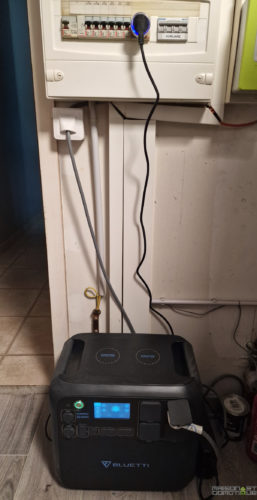


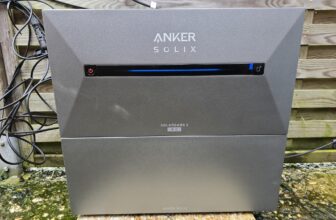
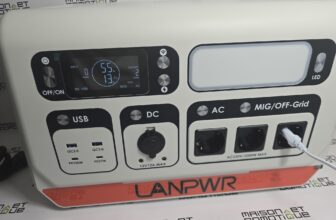
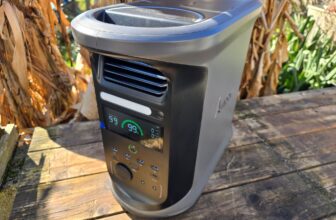
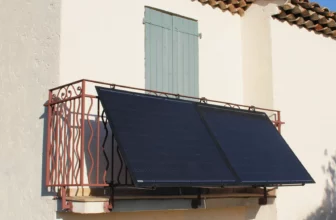

Please remain courteous: a hello and a thank you cost nothing! We're here to exchange ideas in a constructive way. Trolls will be deleted.